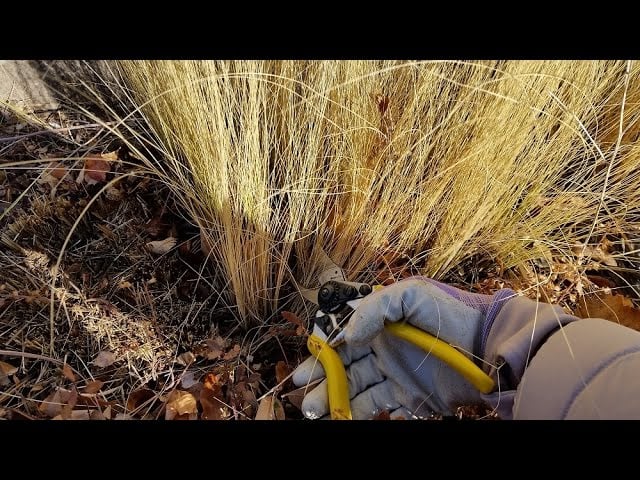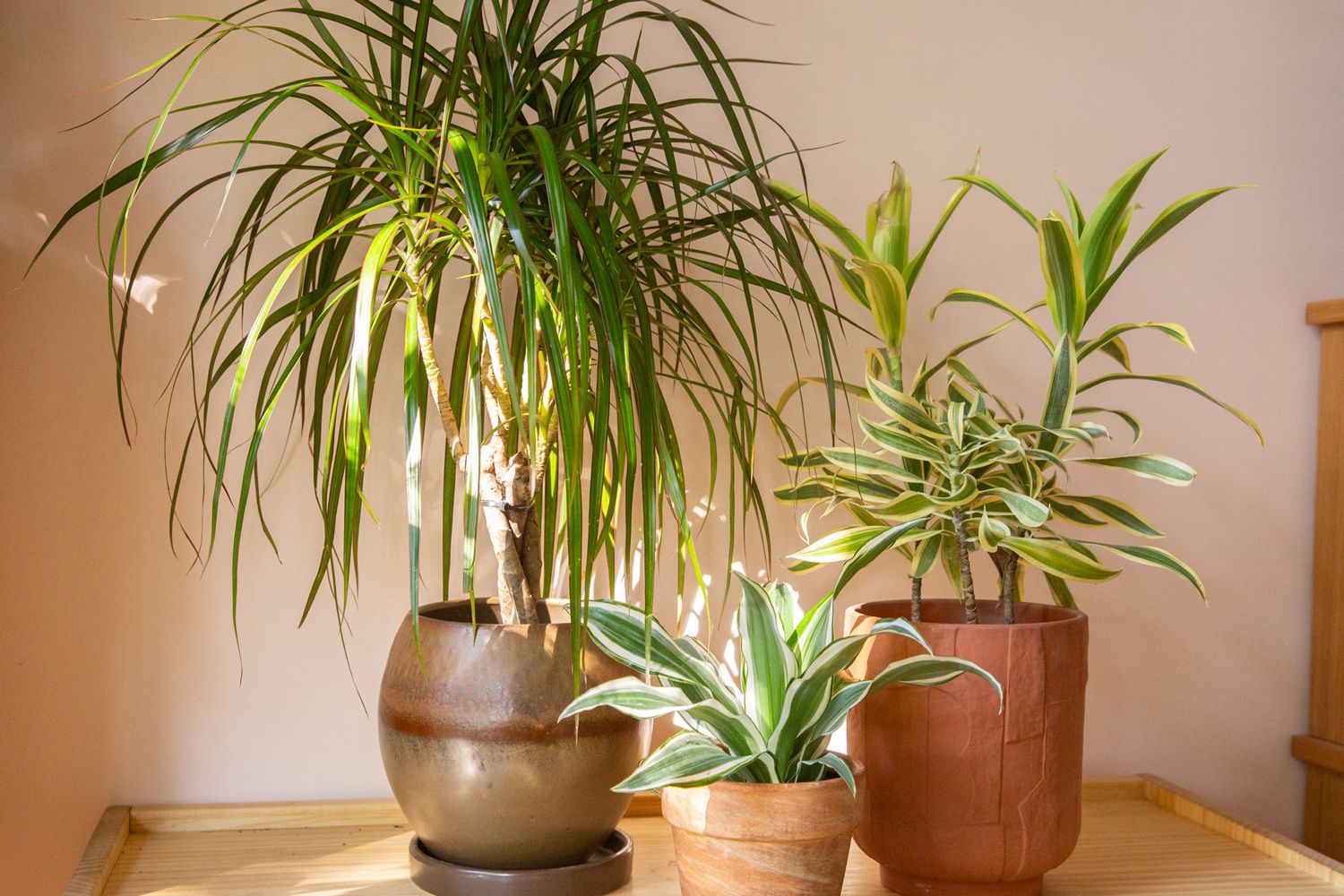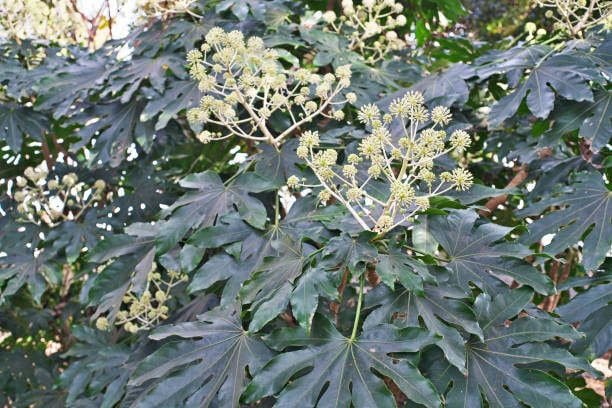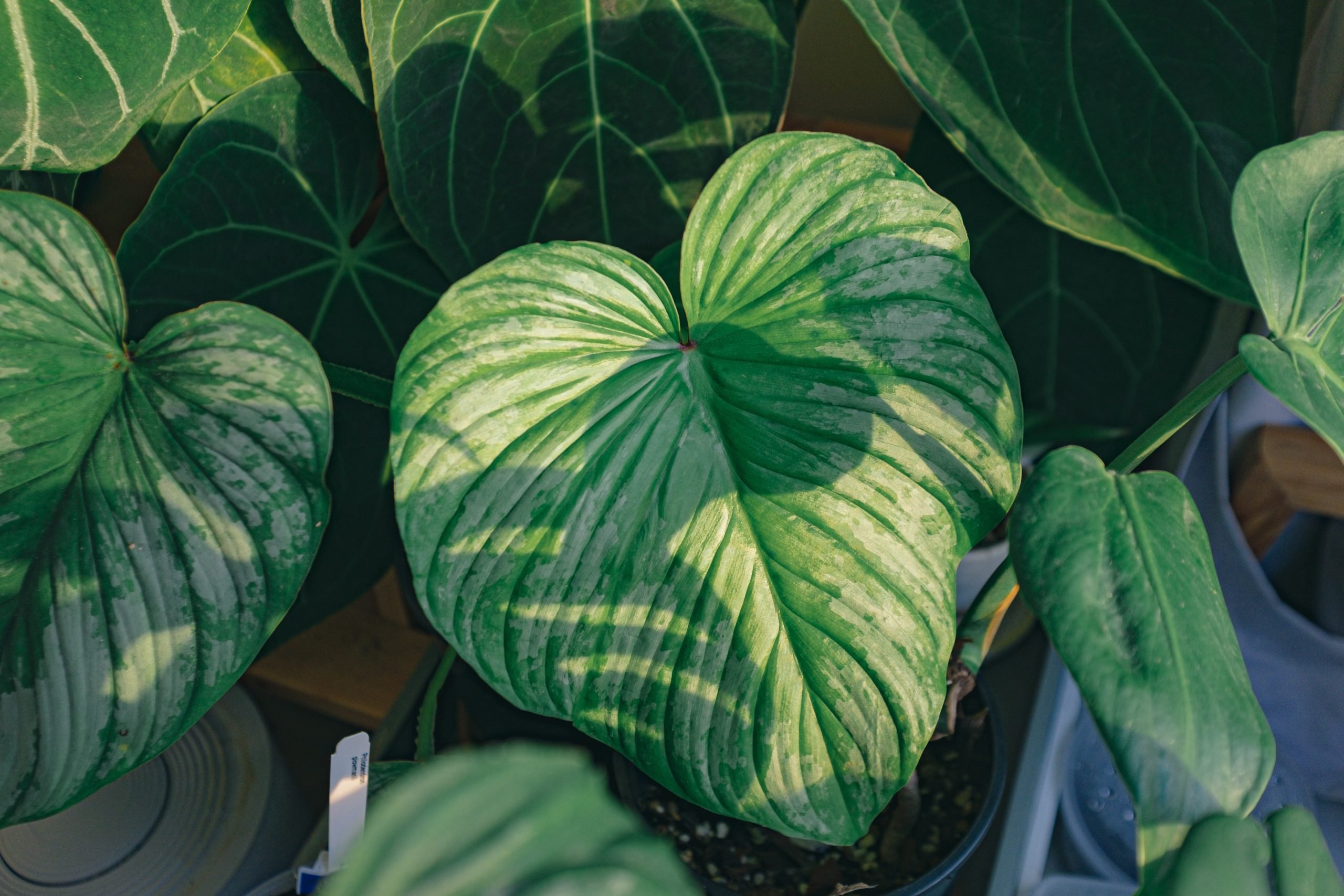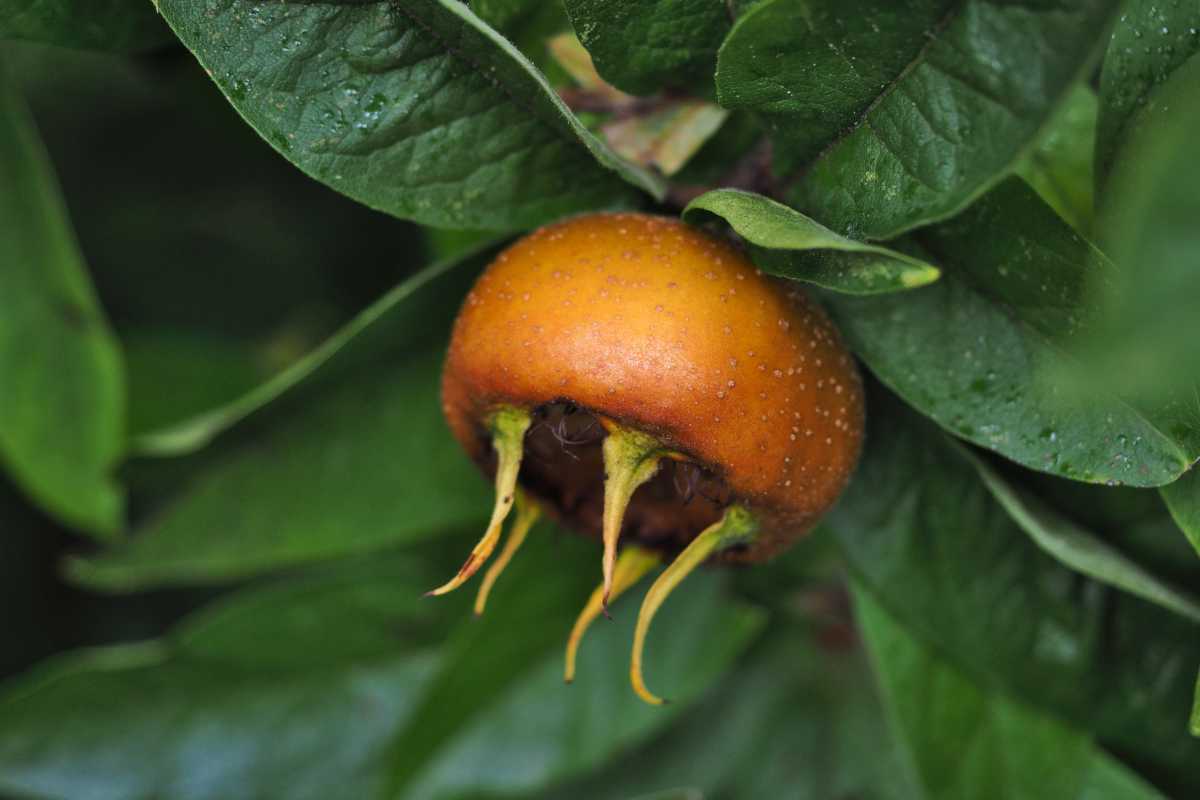How to Care for Your Saxifraga: A Complete Guide
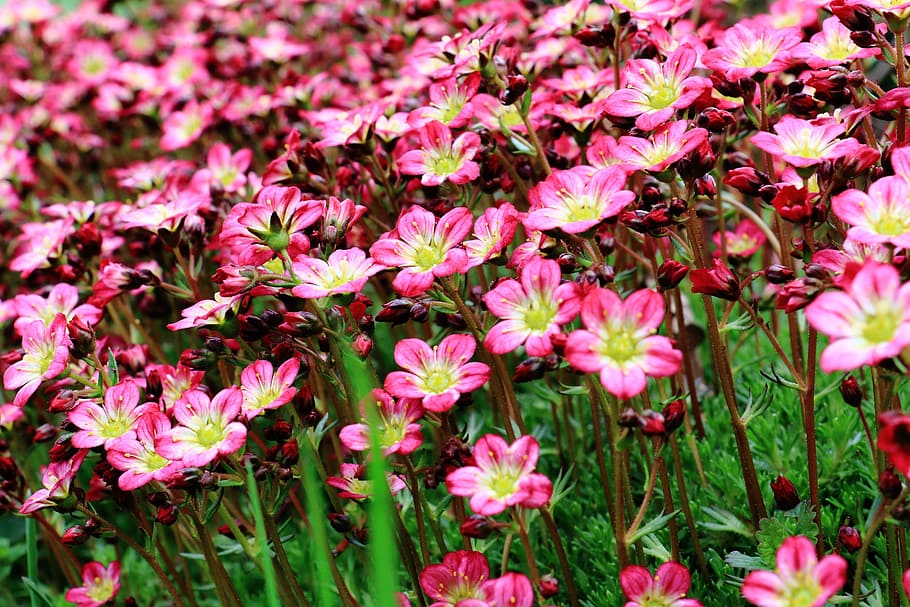
Table of Contents
How will you react if I tell you there’s a plant type whose roots can break stone? I’m not kidding. It is Saxifraga, a hardy plant that blooms with exquisite flowers and attractive foliage. It thrives naturally in temperate zones of continents and is a part of the family Saxifragaceae.
Admired for their off-white to light pink clustered blossoms, Saxifraga is the best choice for your garden for multiple reasons. It is a ground-hugging herb and simple to nurture and maintain as your main garden attraction. Moreover, the Saxiphraga plant will look charming in your container, low-lying spots, or rock garden. This blog will tell you about some of its unique varieties. Also, present growing and caring guidelines.
Keep reading to become a proficient Saxifraga grower!
Profile of Saxifraga
| Family | Saxifragaceae |
| Class | Saxifraga or Saxifrages |
| Type | Holarctic herbaceous evergreens |
| Popular moniker | Rockfoils (Stone crackers) |
| A popular variety in North America |
|
| Popular varieties in Europe |
|
| Blooming Period | February to August |
| Height | 4-12 inches |
North American Varieties
Know the most commonly found Saxifrage varieties in the USA, Canada, and adjoining regions.
1. Early Saxifrage
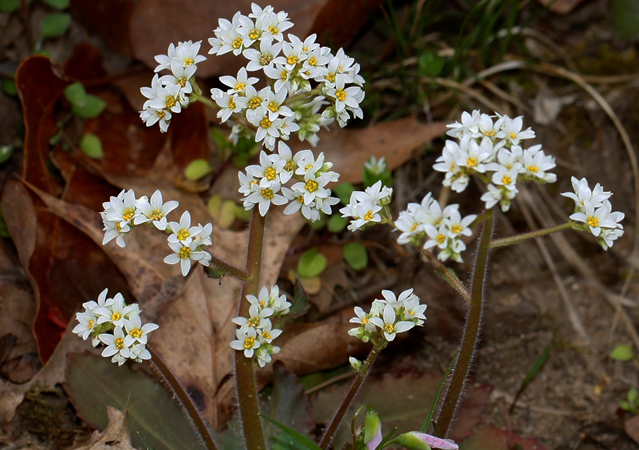
- Hardiness level: 2a-8b
- Sunlight requirement: Direct sunlight only for two to four hours; partial
- Soil requirement: Rocky but moist
- Water requirement: Adequate watering
Planting of this wildflower plant is suitable for Shady Rock Gardens. This genus has a large population and inhabits both wet and dry environments. It grows on the creek sides and rocky slopes and can reach heights up to 18 inches.
Its furry stalk rises from a wreath of yellowish basal leaves. It yields scented white flowers. The showy flowers’ distinctive feature is their petals, separated from one another. The flowering period is from May to June.
You can make salads from tender springtime leaves.
2. Eastern Swamp Saxifrage
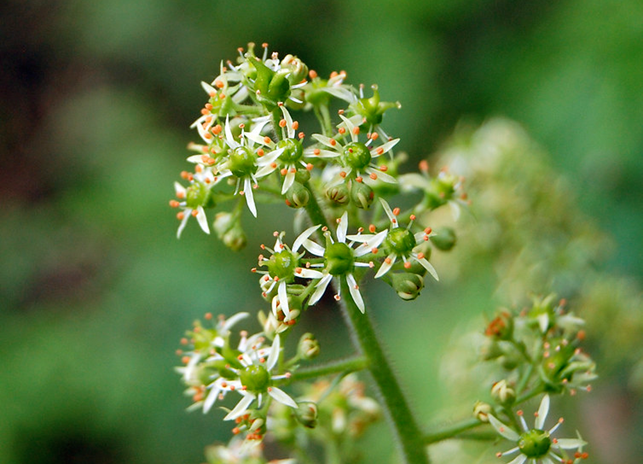
- Hardiness level: 4-7
- Sunlight requirement: partial sun
- Soil requirement: Limey or sweet soil, clayey soil
- Water requirement: Well-hydrated to moist
Saxifraga pensylvanica, or Eastern swamp saxifrage, is an evergreen herb that can grow up to 20 inches. It grows in moist woodlands, pastures, and cracks. The top section of the stem has small, branched clumps of flowers.
Each flower displays a green enlarged basal portion in the centre, surrounded by light yellow or greenish petals and tangerine-edged stamens. When the plant is young, the flowers appear compact, but as it grows older, they spread out.
A short, reddish stalk supports the low-growing hairy leaves. The blooming period is between May to June.
Juice made from its leaves and roots works as a blood purifier.
3. Oregana Saxifraga
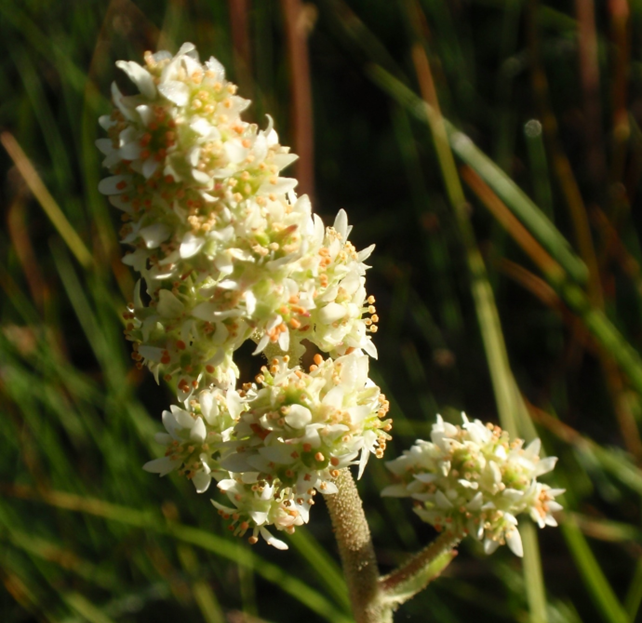
- Hardiness level: 5b to 9b
- Sunlight requirement: Full shade or partial shade
- Soil requirement: Moist clayey, sandy, or chalky soil
- Water requirement: Well-hydrated
Micranthes oregano, or Oregon saxifrage, is a hardy flowering plant that thrives well in different soil types. It is native to moist environments like wetlands and marshes and yields a firm, fleshy offshoot that gives rise to the perennial herb.
It grows a base rosette of up to 10 inches long, proportional wedge-shaped leaves. It features single or several thick panicles of white blossoms on the peak of its resilient stalks.
European Saxifraga Varieties
Meet the most stunning plant types that suitably thrive in Europe, from the UK to Ireland and Spain.
1. Saxifraga Oppositifolia
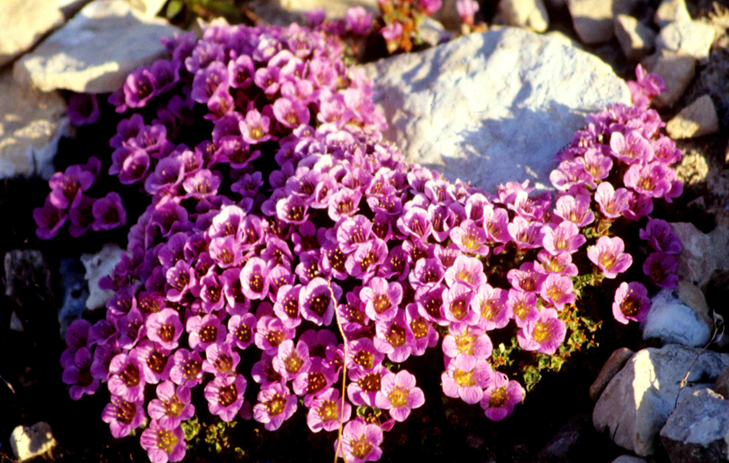
- Hardiness level: H4
- Sunlight requirement: Direct sunlight only for two to four hours; partial
- Soil requirement: Loam, sand
- Water requirement: Moderate watering
This species is commonly known as purple saxifrage. It is a low-growing perennial that forms dense mats of foliage. It has small, round purple or green leaves. In the spring, the clusters of pink flowers thrive just above the leaves. The plant height varies between 1-2 inches.
2. Saxifraga Granulata
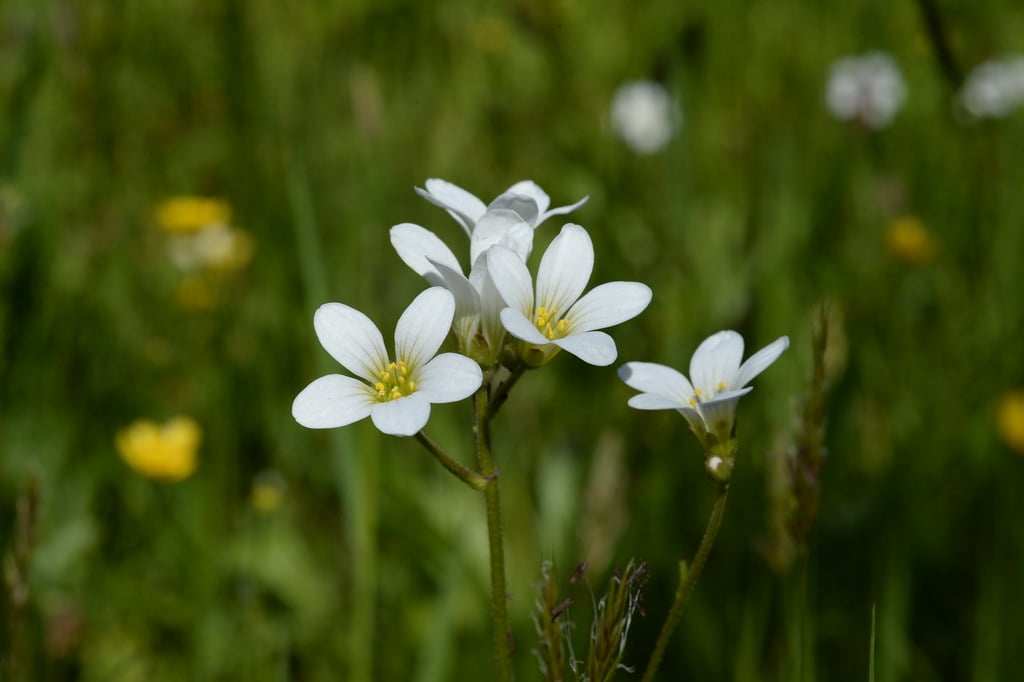
- Hardiness level: H5
- Sunlight requirement: Direct sunlight only for two to four hours; full shade
- Soil requirement: Sandy, chalky, loamy
- Water requirement: When the soil is dry
This species is commonly known as the meadow saxifrage. It is a clump-forming perennial that grows up to 30 cm tall. It has thoroughly ridged and divided basal leaves. In spring, it exhibits clusters of small fluffy white flowers. It thrives in hot and humid conditions.
3. Saxifraga Callosa
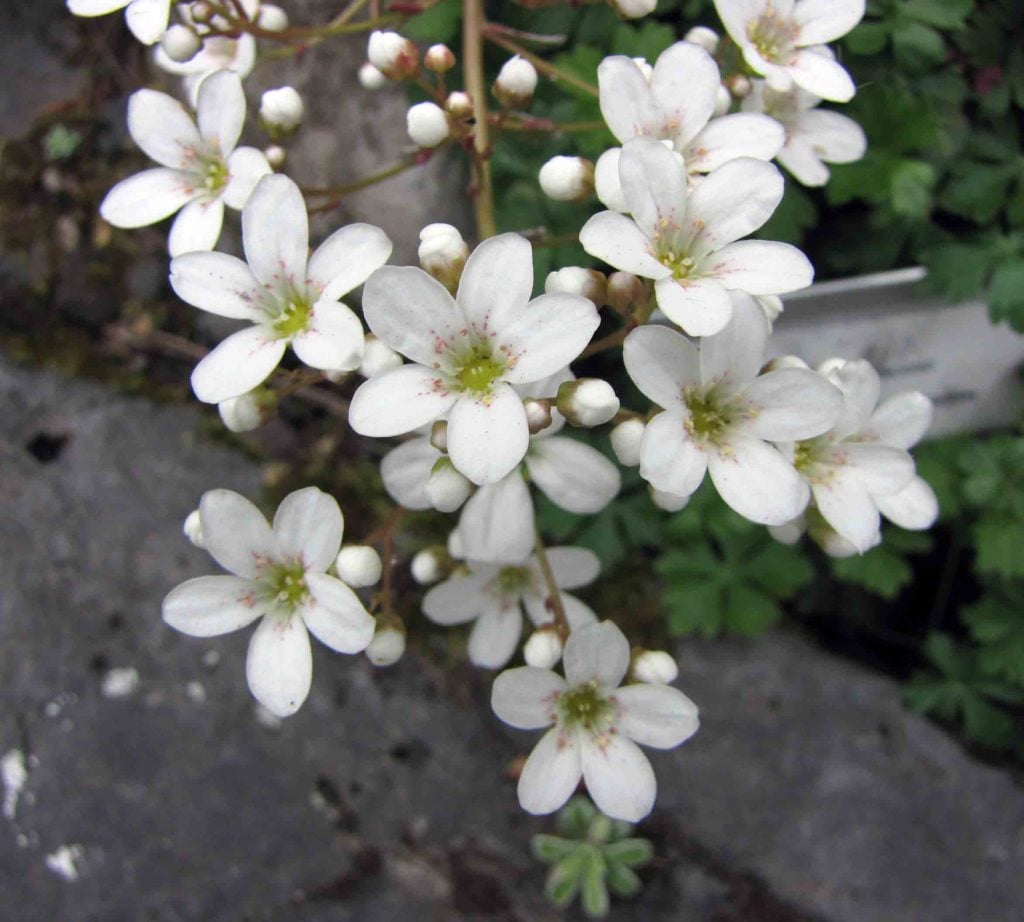
- Hardiness level: H5
- Sunlight requirement: Direct sunlight only for two to four hours; partial
- Soil requirement: Chalky
- Water requirement: Regular watering in dry months
S.callosa, or the Limestone Saxifraga, an easy-maintenance species, is notable for its wide varieties, which often conceals that it is part of a single species. It is a perennial green plant that forms rosettes and has smaller clusters of stellate white blossoms in the early summer.
The leaves are straight and lime-coated with silver-greyish hues. When fully grown, it can reach heights of 7-8 inches.
4. Saxifraga Paniculata
- Hardiness level: 3-9
- Sunlight requirement: Full sun
- Soil requirement: Sandy, chalky
- Water requirement: Adequate watering
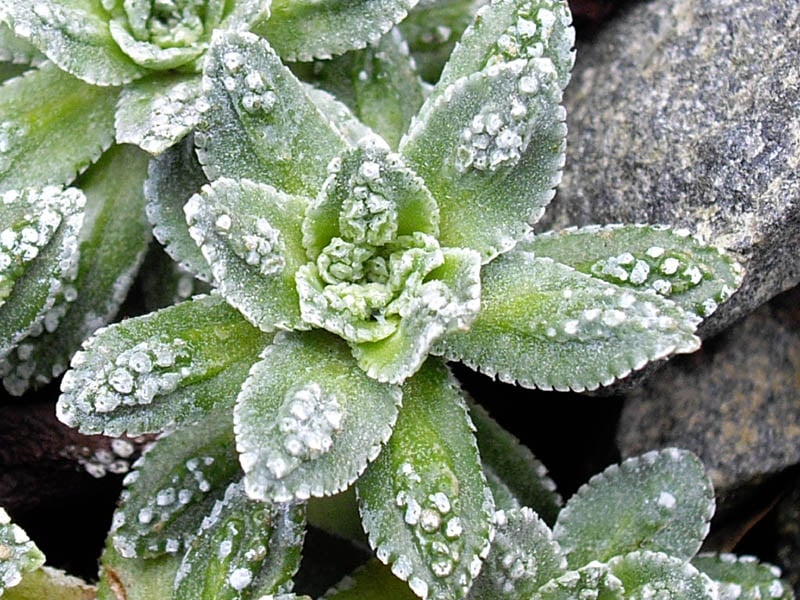
“Lifelong Saxifrage” is the moniker for Saxifraga paniculata, one of the most resilient and enduring species. The silver tufts form mats that thrive languidly on the rocky spots. Different hues of flowers displaying white to faded yellow and from pink to purple hues make the group unique. It is a winter hardy variety and grows up to 12 inches. It has medical properties for treating bladder stones.
A Few Well-Known Saxifraga Cultivators
You can discover more about the most appreciated Saxifraga cultivars.
1. Pink Mossy Saxifrage
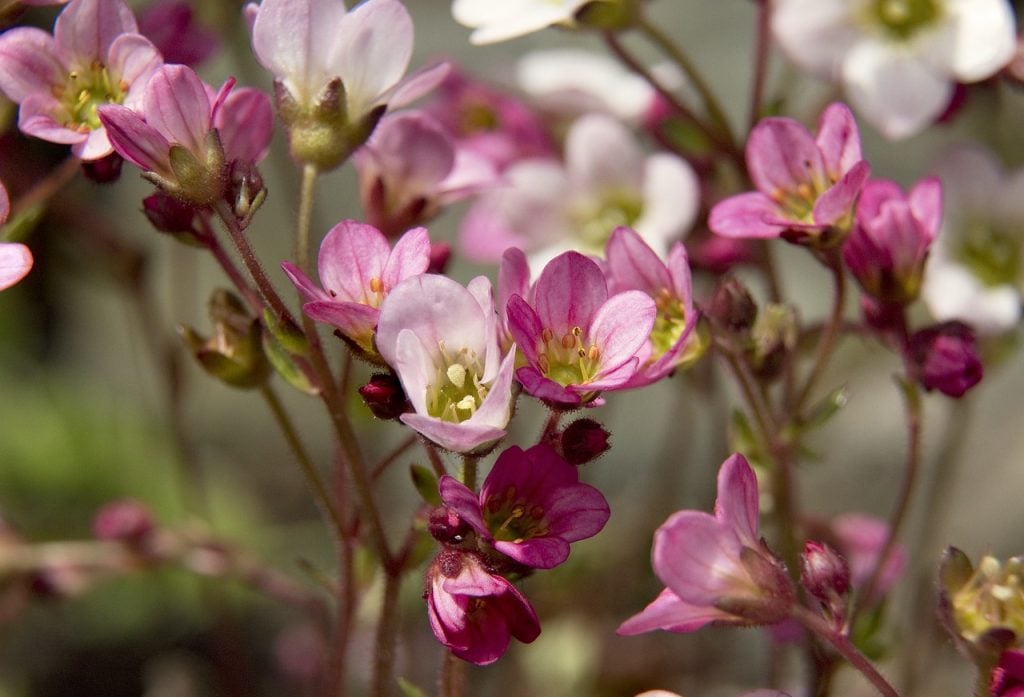
This cultivar is also called Saxifraga “Peter Pan.” It is a tiny evergreen flowering plant, liked for its charmingly thick foliage carpet. It has petite, oblong, and green or mixed-hued leathery leaves and bears clumps of pink blooms during spring and summer.
Suitable to plant in your rock garden, under direct sunlight, or semi-shade. The plant cannot tolerate high temperatures.
2. Saxifraga X Urbium
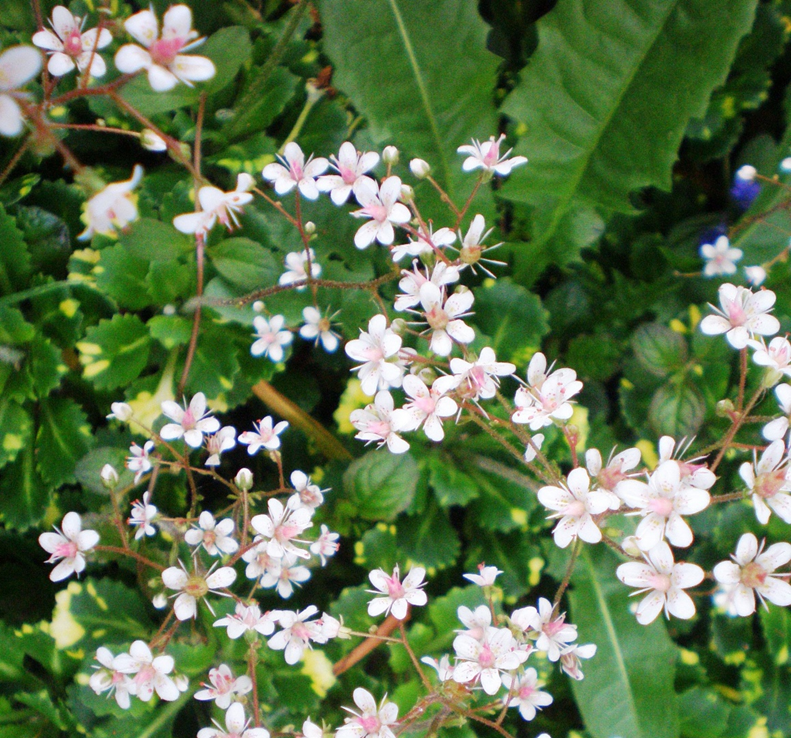
‘Saxifraga London pride’ is the popular name of this variety. This cultivar is a clump-forming evergreen herbaceous variety that grows up to 45 cm. It is a fusion of Saxifraga granulata and Saxifraga spathularis. London Pride thrives best under shade and enhances the landscape’s beauty, yielding white blooms with pink undertones. They grow in clusters up to 12 inches from the last weeks of spring to the onset of summer.
3. Saxifraga X Arendsii
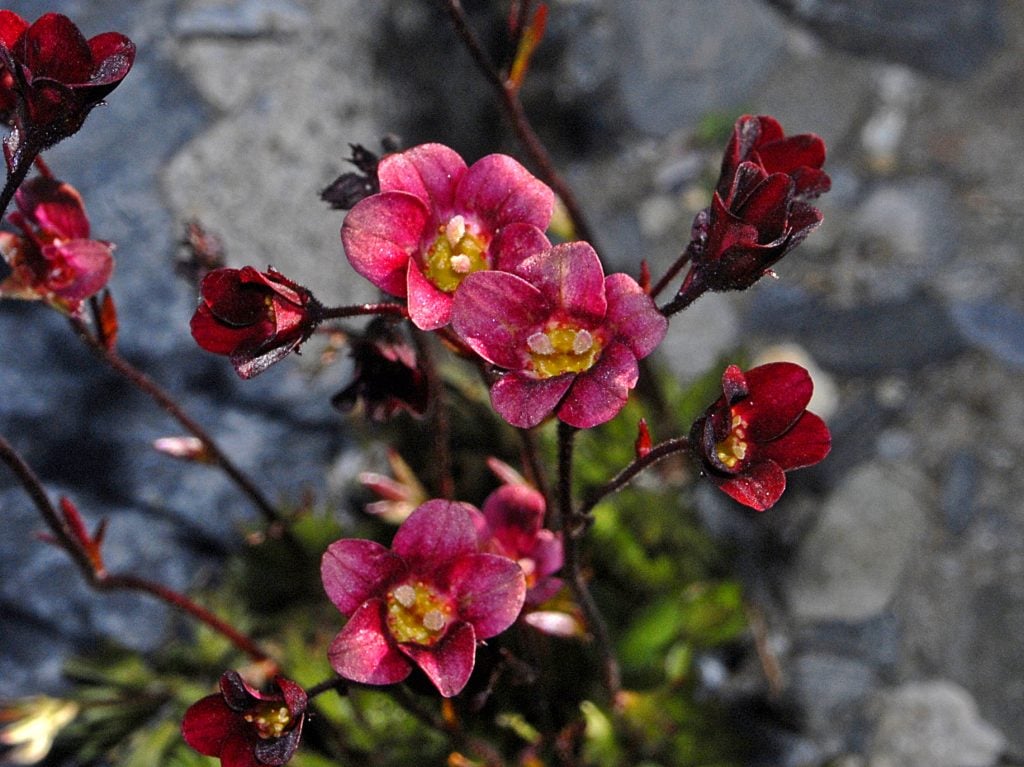
The nickname of this variety is ‘Purple robe’ displays mossy foliage. Star-like, claret-red flowers appear at the spring end. Its needle-shaped leaves maintain their deep green hue all season. Full sun with some shade is ideal for this plant.
In ideal conditions, the Purple robe takes about five years to reach heights of 8 inches and an expanse of 15 inches. Avoid disturbing it in the final weeks of winter because it withers fully during the winter and rises again from its roots in the springtime.
Tips for Growing Saxifrage
While building your dream garden of rockfoils, you need to know about the growing tips for Saxifraga.
1. Soil Conditions
Saxifrgas prefer well-drained soil that is alkaline or neutral in pH. All the herb types thrive best in moderately fertile soil, including loamy, chalky, or sandy soil. Saxifraga X Arendsii needs well-drained, consistently moist soil for healthy growth but will wither in stagnant water. For the majority of types, lightly fertile is ideal. The soil ought to be moist, sandy, or rocky.
2. Watering
These varieties need minimal extra watering if growing in the garden, except during protracted droughts.
Irrigation should be ample for most species in the spring or summer. It is necessary to mist the foliage while the temperature is high. Make sure to wait a few days between waterings in the autumn or winter.
3. Pruning
Saxifragas do not require deadheading. But you can trim away stems and faded blossoms to keep the plant looking neat. After the Pink Mossy saxifrage has finished blooming, you can get rid of any decaying flower stems to promote new growth. To prune, simply cut the stems off above the foliage.
Propagation
The new plant grows from division or seed, depending on the species.
For instance, mountain saxifrage multiplies by dividing adult plants from the stems.
Cuttings can be used to multiply Saxifraga stolonifera. You can grow Saxifraga bronchialis from seeds.
Growing Rockfoils from Seeds
- You can start growing the plant from seed in the spring or autumn. It shows good results if you sow Saxifraga plant species’ seeds in moist, fertile, well-drained, either alkaline or neutral-pH soil.
- Directly plant Saxifraga seeds in the garden. Loosen 1 to 2 inches of topsoil and weed the area. Saxifraga plants need well-hydrated soil, so if necessary, improve the soil conditions by mixing sand or fine grit.
- Place them where they will get direct sunlight or semi-shade, such as a south, east, or west-facing sheltered spot. After sowing the seeds of low-lying Saxifraga varieties, you can gently stroll over them to establish a proper connection between the soil and the seeds.
- Until germination takes place, don’t ignore to maintain the seeds’ moisture consistently. Although most of the Saxifrage plants tolerate heat, you must be mindful of the specific need of a particular plant variety. For example, purple robe seeds need protection from direct sunlight during germination and growth.
Growing Rockfoils from Stem Cutting or Rosettes
- It is best to divide the bushes or separate the rosettes at the beginning of spring or autumn. Here is how to go about it.
- Remove the plant from the ground and carefully detach the rosette from the root.
- Sow the cutting in a soil mixture that drains well.
- You should water newly cultivated stem cuttings regularly and place them under some shade to give the new growth some time to establish in the new place.
Caring Tips for Saxifrage
- The most prevalent issue with growing saxifrage is excess watering. Due to excessive soil moisture, the roots get infected by root rots.
- If you have planted Saxifraga callosa, avoid waterlogging during cold periods.
- Almost no diseases affect the species, though watch out for aphids, slugs, and the glasshouse red spider mite.
- In the spring, mulch the plant base with leaf mould or organic matter.
Ideal Gardening spots
1. Rock Garden
Rockfoils are a natural selection for your rock garden or alpine garden because of their ability to grow in rocky, well-drained soil.
The plant variety is the best for alpine gardens because it can withstand cold temperatures and dry conditions. You can plant it in rock crevices or as a ground cover around larger rocks.
Some varieties of rockfoils are perfect for growing along sideways or borders because the plant grows close to the ground and has lovely foliage.
Some species of Saxifraga, such as Saxifraga umbrosa, are ideal for wet areas or near water features. Its attractive foliage and flowers add interest to the water features.
2. Containers
Saxifraga can thrive in containers such as hanging baskets or window boxes.
Its trailing habit makes it an excellent choice for hanging baskets, and its low-growing ability makes it a good choice for window boxes.
3. Vertical Gardens
You can create living walls or green roofs. Its ability to grow in rocky soil and tolerate dry conditions make it a good choice for various types of gardens.
By choosing the appropriate species and growing conditions for your garden, you can enjoy the elegance of Saxifraga year after year.
Conclusion
Saxigraga plants can add beauty, variety, and appeal to any landscape. They produce a number of lovely garden cultivars that display varied sizes, flower shades, and foliage patterns. The most omnipresent plant grows in the regions of Europe, Asia, and North America.
The blog presented a detailed account of Saxifraga varieties. Suggestions for growing and caring for saxifrage will help you become a confident grower. The species yield stunning flowers and foliage. Saxifraga flourishes in the rocky highlands and alpine regions. Rockfoils prefer full to half-shade and withstand pest attacks. Though overwatering may cause root rot.
If you enjoyed this article, please share it with your pals and leave your thoughts in the comment box.

